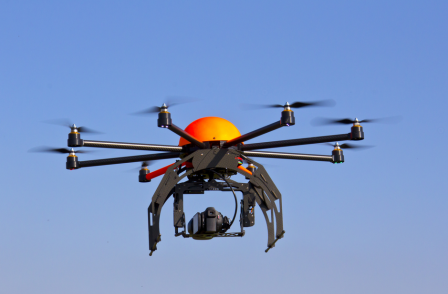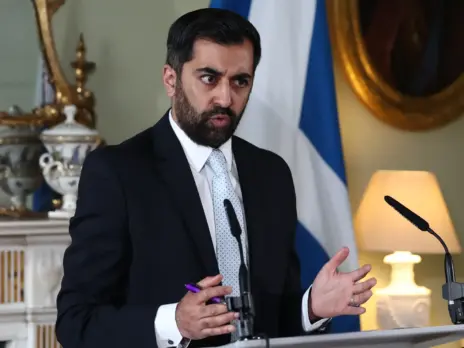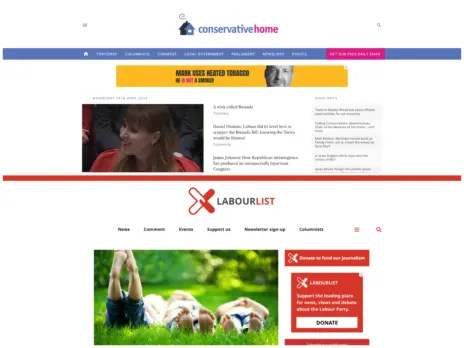
News yesterday that three BBC journalists were questioned by police for flying a drone at Davos last month followed the arrest in Surrey of a freelance journalist who flew a drone near the scene of a fatal fire.
Here Press Gazette takes a look at the use of journalism drones in the UK and finds how journalists can use them responsibly
UK news organisations from the Telegraph and the BBC to Kent-based local newspaper group News Shopper are making extensive use of aerial drones to capture still and video images.
Are these remote-controlled aircraft the new must-have gadget for the multi-skilled journalist?
Freelance photographer and drone specialist Eddie Mitchell sounds a note of caution.
His tip for visual journalists using drones is to develop a good rapport with local police and fire officers to gain better access to emergency scenes.
Mitchell used his drones to assist the fire service when Eastbourne pier caught fire last July.
But having already spent over £10,000 in a year of using drones – including maintenance and upgrades – he questions their value to other freelances when only about 20 per cent of his photography time is spent using them.
Anyone who flies a drone commercially needs permission from the Civil Aviation Authority as well as training, for which courses start from £1,260.
In addition to the training, Mitchell said a realistic set-up cost would include two professional-quality camera drones at £1,000 each and £1,000 a year for insurance.
He insists on the need for two machines, as they require continual maintenance and repair. When they are needed for work he cannot afford to be let down.
He said: “If you want to spend your redundancy money on getting a drone and all the equipment and then there’s no work, you really are in a pickle.”
The small size of drones allow closer proximity than a helicopter or plane, often producing better results in less time and at a fraction of the cost.
Telegraph visual journalist, Lewis Whyld, has made extensive use of a drone he designed and built himself.
He captured footage of last year’s Somerset floods – also checking nobody was trapped in a submerged car – and of a typhoon-hit city in the Philippines.
He has spoken of exploring long-range drones that can fly up to 20 miles from their handler and equipping them with devices to detect chemical weapons in Syria.
The BBC has also used a drone as part of its news coverage, naming it Hexacopter. It produced a montage of shots around Brazil for last year’s football World Cup, footage in 2013 of the proposed HS2 route and last month used a drone to take aerial shots of former Nazi concentration camp Auschwitz.
BBC transport correspondent Richard Westcott said last year: “This machine is unique in being able to go close to something then soar into the air in one smooth movement.
“It can creep along the ground, shimmy a fence, crawl through a tree then climb to 400ft (120m) for a spectacular panorama.
“As television and online journalists, we are very excited about its scope to change the perspective of our films.”
Westcott also said a single 20-second shot of himself talking to camera before the drone takes off along the HS2 route took three or four hours to get right.
In its Future of News report, the BBC mentions the potential of drones to be used for innovative data gathering, including the production of 3D annotated maps, counting the number of people at large events or measuring levels of pollutants.
Kent-based newspaper group the News Shopper has its own drone and invites readers to request where they would like it to fly next.
Piloted by editor Andy Parkes, the "Shopper Chopper" has been used to give readers a birds’ eye view of Petts Wood, the Charlton Athletic football ground and a huge illegal rubbish dump in Sidcup.
Martin Keene, group picture editor at Press Association, told Press Gazette that the news organisation was also seeking to buy a drone.
He said: “The ability to use a UAV will provide some quite innovative moving pictures and still pictures.
“It will do really well for weather stories to fly over floods and over snow.”
Keene said the opportunities to deploy a drone will be more frequent than a helicopter, adding: “I think they are going to become essential tools.”
UK drone journalism essentials
Anyone wishing to use a drone commercially must obtain permission from the Civil Aviation Authority (CAA).
In order to do this, a course must be completed with one of two accredited companies, EuroUSC or ResourceUAS.
The course costs £1,260 with EuroUSC and £1,600 with Resource Group, and includes a mixture of distance learning, two-to-three days of safety theory, and a practical session.
Pilots must pass all exams and have their drone equipment signed off before the CAA is able to process permissions at a cost of £133 for drones under 7kg and £226 for drones weighing between 7kg and 20kg. (Drones over 20kg are, in most cases, subject to the same regulation as manned aircraft.)
The accredited training companies charge an annual renewal fee of between £90 and £125 and the CAA charges half the original weight-dependent processing fee as long as the drone model is unchanged.
Regulation set out by the CAA says drones must remain 150m from congested events or large assemblies, 50m from a person or building, and within the pilot’s line of sight, which is 500m horizontally and 122m vertically.
Flight beyond these distances can be permitted, but the operator is required to provide explicit proof that this can be conducted safely.
Photographers and video journalists need to bear in mind that standard law and editorial guidelines apply as they would for on-the-ground photography.
So for instance, the Editors' Code (which underpins the the Independent Press Standards Organisation) states: "It is unacceptable to photograph people in private places without their consent. Private places are public or private property where there is a reasonable expectation of privacy."
A number of UK media organisations are already listed by the CAA as permitted commercial pilots.
Email pged@pressgazette.co.uk to point out mistakes, provide story tips or send in a letter for publication on our "Letters Page" blog






